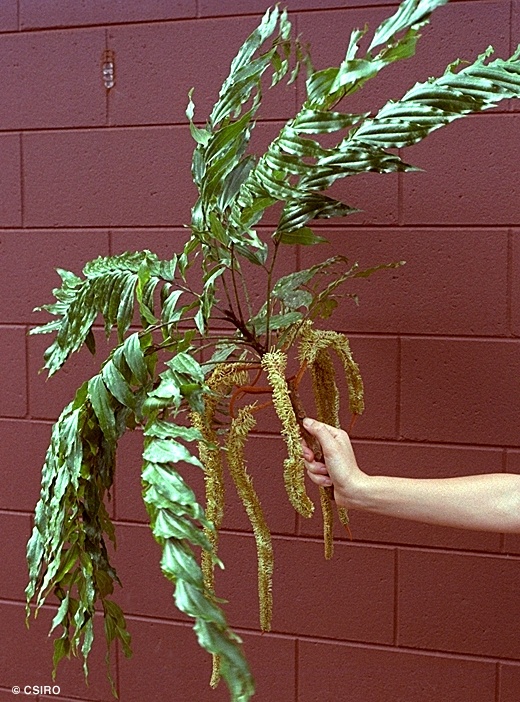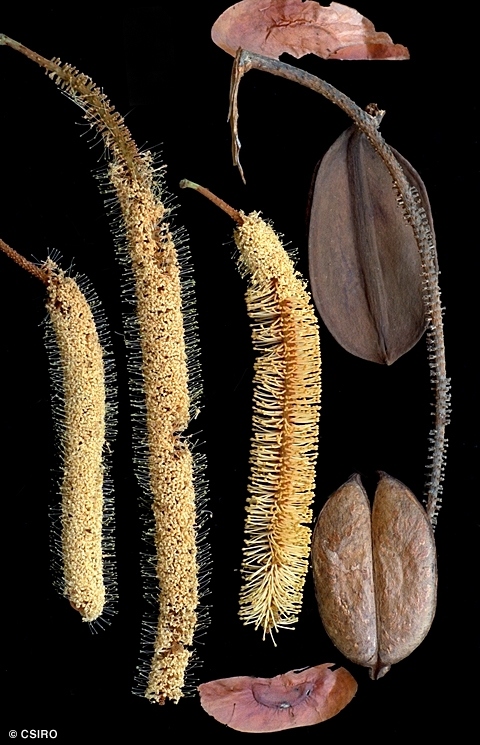Australian Tropical Rainforest Plants - Online edition
Austromuellera trinervia C.T.White








White, C.T. (1932) Bulletin of Miscellaneous Information, Kew : 235. Type: Queensland. Boonjie, Atherton Tableland, Jan. 1923, C.T. White s.n.
Mueller's Silky Oak; Oak, Mueller's Silky
Oak grain in the wood and a corresponding pattern in the outer blaze. Outer dead bark orange-brown when cut.
Racemes about 30-70 cm long. Tepals about 17-25 mm long. Hypogynous glands three, often red, turgid. Ovules 1 or 2.
Fruits about 14-21 cm long. Seeds flat, about 13-16 x 3.5-4.5 cm overall including the wing.
Cotyledons without venation. First pair of leaves with about 6-9 leaflets or lobes. Stem, petioles and terminal bud clothed in rusty hairs. At the tenth leaf stage: compound leaf with about 9-12 leaflets, leaflet blades lanceolate, glabrous, trinerved; terminal leaflet usually lobed; compound leaf clothed in rusty red hairs. Seed germination time 26 to 41 days.
This little known tree deserves greater recognition in horticulture. It has attractive foliage and produces outstanding displays of flowers in long racemes.





